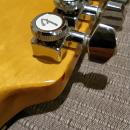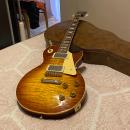mangel, cuando hablas de potenciómetro, ¿te refieres al l-pad variable? Si es así, la resistencia que tiene que tener es la de la salida del amplificador, para igualarlas, ¿no?, y no en función de los decibelios que queramos aplicar.
El primer esquema es tan complicado como el otro, porque todo está en conseguir el regulador.
En cuanto a lo de conocer la impedancia del altavoz, si te refieres en términos estrictos de impedancia, lo tenemos complicado porque eso no se mide así como así. No sé qué follones hay que hacer para medirla, pero los hay. ¿Pero para qué? Si en cambio es la resistencia en DC, pues con un ohmetro, o la que tenga indicada: 4, 8, 16. Sinceramente esta parte no me tiene tranquilo que simplemente se diga así a la ligera que se puede conectar cualquiera de esos 3, por lo menos al segundo esquema (que es una complicación del primero).
El primer esquema es tan complicado como el otro, porque todo está en conseguir el regulador.
En cuanto a lo de conocer la impedancia del altavoz, si te refieres en términos estrictos de impedancia, lo tenemos complicado porque eso no se mide así como así. No sé qué follones hay que hacer para medirla, pero los hay. ¿Pero para qué? Si en cambio es la resistencia en DC, pues con un ohmetro, o la que tenga indicada: 4, 8, 16. Sinceramente esta parte no me tiene tranquilo que simplemente se diga así a la ligera que se puede conectar cualquiera de esos 3, por lo menos al segundo esquema (que es una complicación del primero).
Responder
Citar







